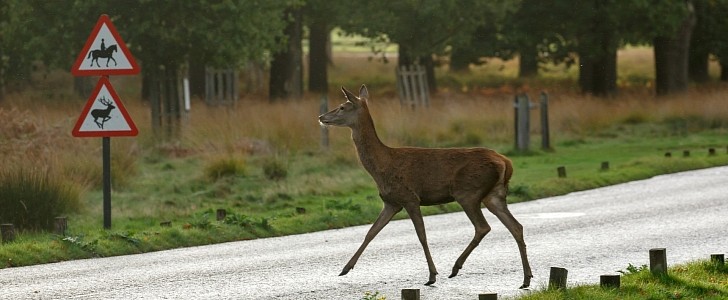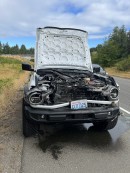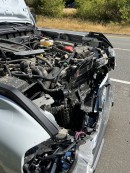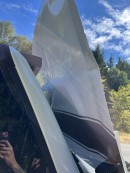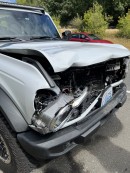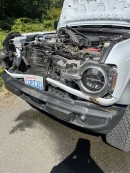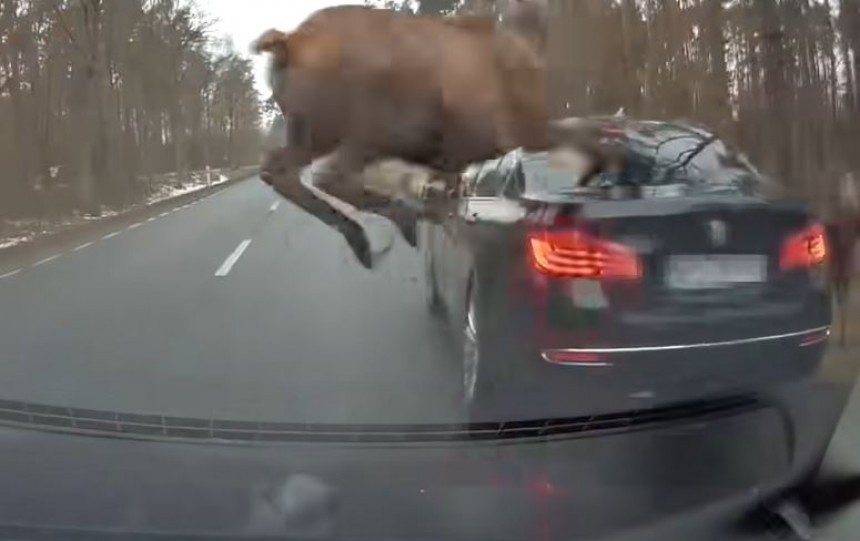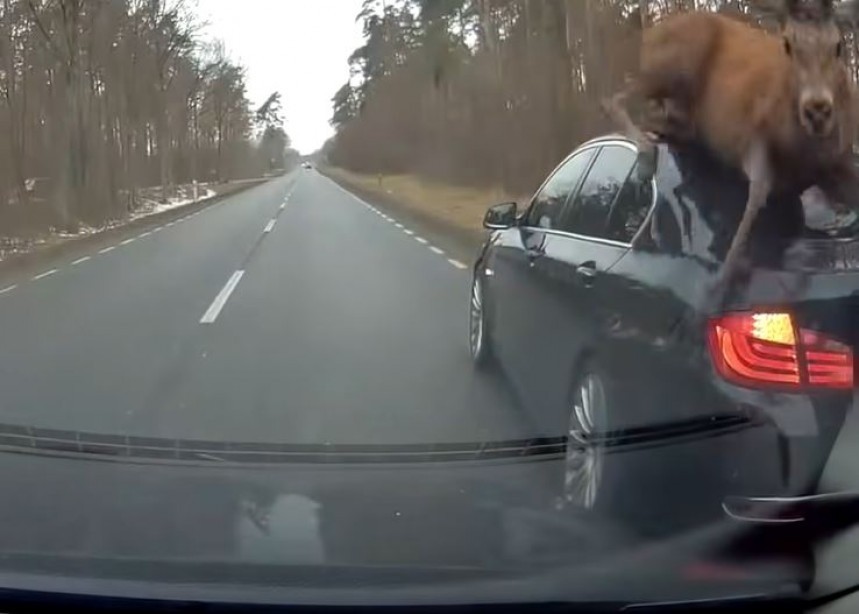This year's September equinox, which is also referred to as an Autumnal equinox in the Northern Hemisphere, officially confirms that Summer is over, and we must prepare for a new season. In many places, the new season has already begun, and it comes with several challenges for drivers, including one on hoofs.
In case you were unaware, the second half of September marks the beginning of deer breeding season, which involves higher activity for these animals at dawn and dusk. The two moments of the day happen to coincide with the morning and evening rush hour in human time. Sadly, the animals' natural habits lead to an increase in road crossings, and they just jump out without looking left or right. In case you were wondering, the season lasts until early November in most countries, so their activity should be back to normal in December.
In other words, this is the season when the most road accidents involving deer occur, and statistics show that about 10,000 deer are killed instantly in the UK alone after incidents like these. According to experts on the matter, the deer population in the UK sits at about two million, and almost 75,000 of them get hit by vehicles each year, out of which almost ten thousand died on the spot.
The same statistics show that damage to vehicles reaches GBP 17 million each year from deer-related incidents, and 10 to 20 humans, on average, die because their vehicles hit deer. As you may be aware, deer are not the only animals that get caught up in traffic accidents as they cross the road, but you should be aware that this is the period of the year that has the most incidents related to them.
The values above refer to accidents in UK, but all the other countries in the Northern Hemisphere have their share of ungulates, which is the word that describes the category of hoofed animals such as elk, moose, deer, and other such creatures that have no fault for not being able to understand how to cross a road safely in their habitat.
In the U.S., about 250,000 deer are killed each year by road collisions, which means that one in four deer dies in the USA after getting hit by a vehicle. About 1.5 million motor vehicle accidents take place each year involving deer, causing property damage in excess of $1 billion, while approximately 200 people die each year in the resulting crashes.
Data from State Farm Insurance noted that collisions between cars and deers occur in November more than any other month, so your experience may vary depending on where you live. Scandinavian readers should keep an eye out for elk, for example.
According to statistics, the odds of hitting a deer with a car in the U.S. are 1 in 116, and the most accidents of this kind happen in West Virginia, where the chances are 1 in 37. In Michigan, the chance is 1 in 54, same as in Pennsylvania. Another thing that might help you on your next trivia night is that deer travel almost 3,000 miles each year and that they live up to the average age of 4.5 years in the wild.
The first tip in preventing a collision with deer is to take note of the warning signs on the side of the road that you are driving on that show wild animal crossings. Those signs are not put up there at random but do refer to specific kinds of animals, and in the case of deer – this is the time of the year when they are most likely to cross.
The second thing that drivers need to do is keep their speed down while driving through forests, natural parks, and other such places, as there is a chance to encounter deer at short notice. Driving at the speed limit might be too much to enable you to stop quickly, so mind your speed.
Biologists say that deer are most active at dawn and dusk, but they may have assorted reasons to run across the road at other times of the day. If you happen to spot one animal, slow down because there may be several behind it that are about to run onto the road.
Turn on your hazard lights if there are other vehicles behind you, and do not hesitate to stop if you think that the animal is about to run in the middle of the road. It is best to wait for them to do their thing instead of presuming that the danger is gone and speeding away as if you are home free.
In case you are unfortunate enough to have a deer or other wild animal jump in front of your vehicle, do not try to swerve away from it. Your subconscious might try to push you to do so, but if that props your vehicle into oncoming traffic, an electricity pole, or a tree, it will be worse than hitting deer.
If there is a deer that is crossing the road ahead, do your best to slow down before you reach it, and you may be fortunate enough to stop or significantly slow down before you reach it, and it may have just run off away from your lane by then.
However, if the animal is significantly closer and just jumps in front of your vehicle, braking will not do much to improve your situation, but you still must do it in an effort to reduce the damage incurred by your vehicle and the animals' suffering.
The unfortunate scenario of hitting a deer, elk, moose, or whatever wild animal must involve a full stop on your part, taking photos of the event to prove that you hit an animal and not a human, as well as calling the police as soon as you are sure that you have stopped.
In some cases, the animal might be saved if the police organize professional veterinary assistance in time. Whatever you do, please do not let an injured animal suffer; get them to a vet immediately.
In other words, this is the season when the most road accidents involving deer occur, and statistics show that about 10,000 deer are killed instantly in the UK alone after incidents like these. According to experts on the matter, the deer population in the UK sits at about two million, and almost 75,000 of them get hit by vehicles each year, out of which almost ten thousand died on the spot.
The same statistics show that damage to vehicles reaches GBP 17 million each year from deer-related incidents, and 10 to 20 humans, on average, die because their vehicles hit deer. As you may be aware, deer are not the only animals that get caught up in traffic accidents as they cross the road, but you should be aware that this is the period of the year that has the most incidents related to them.
The values above refer to accidents in UK, but all the other countries in the Northern Hemisphere have their share of ungulates, which is the word that describes the category of hoofed animals such as elk, moose, deer, and other such creatures that have no fault for not being able to understand how to cross a road safely in their habitat.
Data from State Farm Insurance noted that collisions between cars and deers occur in November more than any other month, so your experience may vary depending on where you live. Scandinavian readers should keep an eye out for elk, for example.
According to statistics, the odds of hitting a deer with a car in the U.S. are 1 in 116, and the most accidents of this kind happen in West Virginia, where the chances are 1 in 37. In Michigan, the chance is 1 in 54, same as in Pennsylvania. Another thing that might help you on your next trivia night is that deer travel almost 3,000 miles each year and that they live up to the average age of 4.5 years in the wild.
The first tip in preventing a collision with deer is to take note of the warning signs on the side of the road that you are driving on that show wild animal crossings. Those signs are not put up there at random but do refer to specific kinds of animals, and in the case of deer – this is the time of the year when they are most likely to cross.
Biologists say that deer are most active at dawn and dusk, but they may have assorted reasons to run across the road at other times of the day. If you happen to spot one animal, slow down because there may be several behind it that are about to run onto the road.
Turn on your hazard lights if there are other vehicles behind you, and do not hesitate to stop if you think that the animal is about to run in the middle of the road. It is best to wait for them to do their thing instead of presuming that the danger is gone and speeding away as if you are home free.
In case you are unfortunate enough to have a deer or other wild animal jump in front of your vehicle, do not try to swerve away from it. Your subconscious might try to push you to do so, but if that props your vehicle into oncoming traffic, an electricity pole, or a tree, it will be worse than hitting deer.
However, if the animal is significantly closer and just jumps in front of your vehicle, braking will not do much to improve your situation, but you still must do it in an effort to reduce the damage incurred by your vehicle and the animals' suffering.
The unfortunate scenario of hitting a deer, elk, moose, or whatever wild animal must involve a full stop on your part, taking photos of the event to prove that you hit an animal and not a human, as well as calling the police as soon as you are sure that you have stopped.
In some cases, the animal might be saved if the police organize professional veterinary assistance in time. Whatever you do, please do not let an injured animal suffer; get them to a vet immediately.
